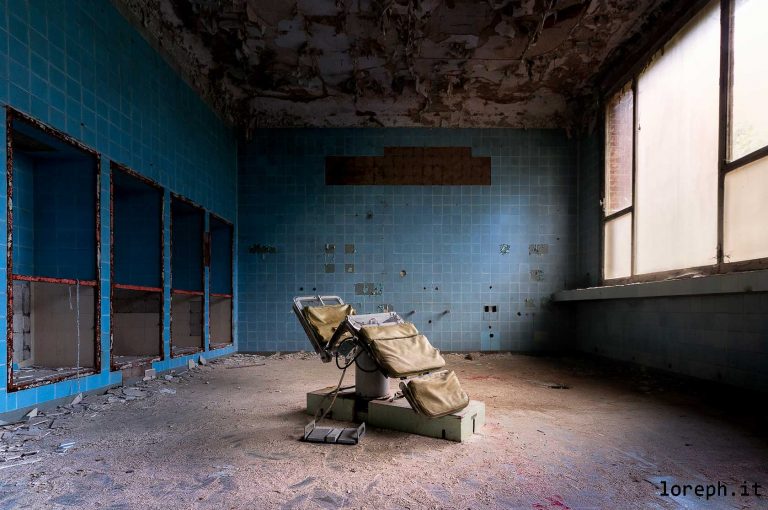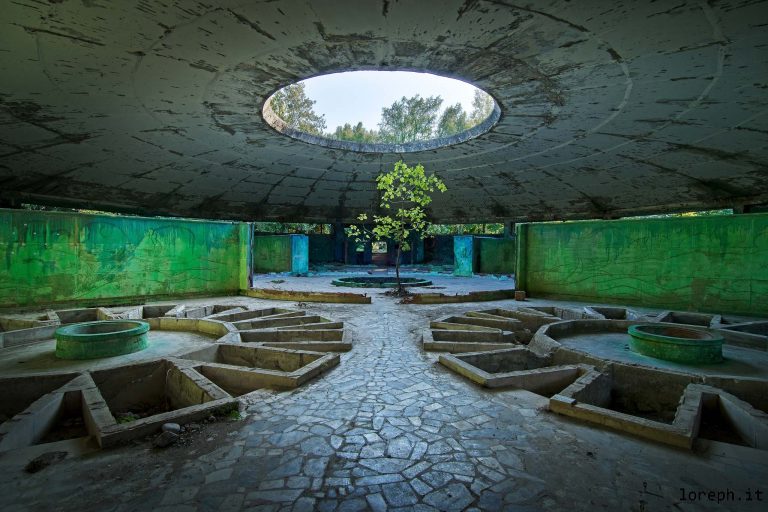BATHHOUSE No.5 [GE]
Exploration #228 Bathhouse No.5 (testo italiano a fondo pagina). Bathhouse No.5 was one of the nine thermal baths located within the large central park of Tskaltubo (წყალტუბო), the town located in west-central Georgia designated as an important balneotherapy centre by the government of the former Soviet Union.
Tskaltubo has always been famous for its healing mineral waters and radon bath treatments. The centre focuses on balneotherapy for circulatory, nervous, musculoskeletal, gynaecological and skin diseases.
The first balneological baths were opened around 1870 and in 1925, the first sanatoriums and curative structures were built. Development continued apace and in 1931 the town was designated a balneotherapy and spa centre by the Soviet government. Tskaltubo was one of Stalin’s favourite holiday resorts: he had a private swimming pool in Bathhouse No. 9, which is still in use today and not far from the abandoned Bathhouse No.5.
During the Second World War the hotels were used as hospitals, but after the war Tskaltubo became one of the most popular tourist destinations in the Soviet Union. Moreover, it was not only a luxury holiday for the rich, but spa treatments could also be prescribed by doctors and provided free of charge to the poorer population. Four trains arrived daily from Moscow. There were about 5,000 beds in 19 hotels and sanatoriums and up to 1,500 people a day underwent treatment.
The independence of Georgia in 1991 and the fall of the Soviet Union at the end of December 1991 caused the Tskaltubo spa industry to collapse. Without guests, most hotels and resorts were forced to close. Buildings were abandoned and fell into disrepair.
In 1992, a war broke out in neighbouring Abkhazia. More than 200,000 displaced Georgians fled the conflict and about 10,000 of them found refuge in the empty buildings of Tskaltubo. It was supposed to be temporary accommodation but today, almost 30 years later, these makeshift flats have become permanent homes for new generations of families. The condition of the buildings is extremely poor even though they still possess the magnificence of Soviet architecture. A couple of former structures, Hotel Medea and Hotel Imereti, are still so incredibly photogenic that they host multiple wedding photo shoots during the summer months. Bathhouse No. 5, on the other hand, is just a skeleton of mouldy, peeling walls within the large city park.
In Tskaltubo there are other former thermal bath like the Bathhouse No.8.










